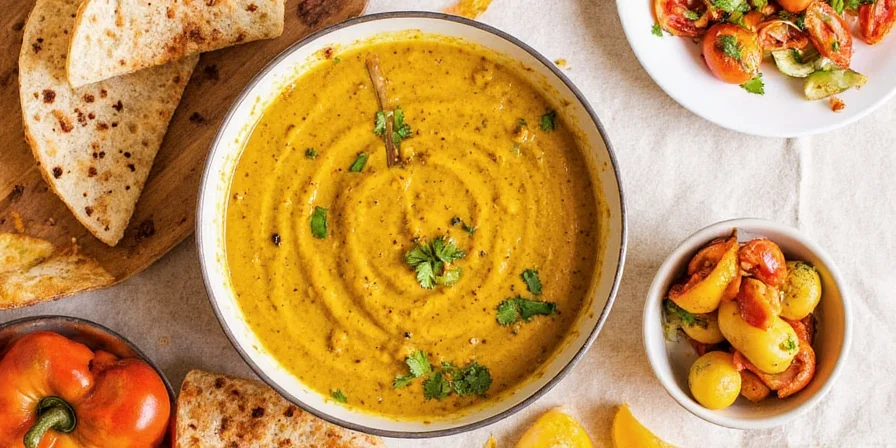Is Curry Indian? The Truth Behind One of the World’s Most Misunderstood Dishes
Introduction: A Spicy Mystery Wrapped in a Coconut Shell
Let’s cut to the chase — is curry Indian? Yes… but also no. Like asking if pizza is Italian (yes, but have you tried the pineapple version in Hawaii?), the answer depends on who you ask, where you are, and what kind of spices you’ve got in your pantry.
What Exactly Is ‘Curry’, Anyway?
The word “curry” doesn’t actually exist in most Indian languages. It’s an anglicized term that British colonizers used to describe any spiced-up dish from South Asia. Imagine someone calling all soups “stew” — it’s a bit like that!
Key Ingredients That Define Curry
- Turmeric – The golden glow-maker
- Cumin – Adds earthy depth
- Coriander – Bright and citrusy
- Chili powder – For that kick-in-the-pants heat
- Garam masala – The warm finishing touch

So Is Curry Indian?
Short answer: Kind of.
Longer answer: While the roots of modern curry are undeniably Indian, especially from regions like Tamil Nadu, Kerala, and Punjab, it has since gone global — evolving into completely different beasts across continents.
Curry Across the Globe: A Tasty Comparison
| Country | Style | Signature Ingredients | Flavor Profile |
|---|---|---|---|
| India | Regional Curries | Turmeric, chili, mustard seeds, curry leaves | Complex, layered, aromatic |
| Thailand | Thai Green & Red Curry | Galangal, lemongrass, kaffir lime leaves | Sour, sweet, spicy |
| Japan | Japanese Curry | Fruits, honey, roux blocks | Mild, sweet, savory |
| Jamaica | Jamaican Curry | Scotch bonnet, thyme, allspice | Hot, herby, bold |
| UK | British Curry | Korma paste, garam masala, yogurt | Creamy, rich, comfort food |
Spice Timeline: How Curry Went From Local to Legend
- 1500s: Portuguese traders bring chilies from the Americas to India.
- 1700s: British colonizers fall in love with spiced stews and start bottling their own “curry powders.”
- 1800s: Indian laborers take curry traditions to Caribbean, Africa, and Southeast Asia.
- 20th Century: Japanese navy adopts a mild curry inspired by British recipes. Meanwhile, Thailand develops its coconut-based curries.
- Today: You can find curry-inspired dishes everywhere from Nairobi to New York!
Practical Tips: Spice Up Your Kitchen Like a Pro
Tip #1: Build Layers, Not Just Heat
A great curry isn’t about how much fire you can handle — it’s about building flavor layers. Start with onions, garlic, and ginger as your base, then toast whole spices before adding liquids.
Tip #2: Use the Right Tools
- Cast iron or stainless steel pots for even heat distribution.
- Spice grinder to freshly mill your blends for extra punch.
- Ladle and strainer — because life’s too short for clumps.
Tip #3: Don’t Rush the Tempering
In Indian cooking, tempering (tadka) means frying spices in hot oil to unlock their flavors. This step makes all the difference! Try mustard seeds, curry leaves, dried red chilies, and cumin seeds for a quick pop of aroma.

Tip #4: Balance Is Key
If your curry feels too bitter or sour, add a pinch of sugar or a splash of cream. If it’s bland, try adding more salt or another layer of spice like smoked paprika or a dash of tamarind paste.
Tip #5: Experiment Globally
Once you’ve mastered the basics, go wild with international twists:
- Add coconut milk for Thai vibes
- Throw in a cinnamon stick for Middle Eastern flair
- Use soy sauce and ginger for East Asian inspiration
- Try apples and honey for a German-style currywurst sauce!
Curry Trivia: Fun Facts to Impress at Parties
- There are over 100 types of curry in India alone — each region has its own unique blend.
- Japanese curry is one of the most popular school lunches in Japan — known as “kare raisu”!
- Caribbean curry owes its popularity to Indian indentured laborers during the 19th century.
- The British military adopted curry so thoroughly that “Curry Day” is celebrated annually in the UK.
Conclusion: Curry Knows No Borders
So back to our original question: Is curry Indian? Yes, its roots run deep in Indian soil. But just like jazz, curry has evolved globally — taking on new rhythms and flavors wherever it goes.
Whether you're sweating over a bubbling pot of vindaloo, sipping on a creamy korma, or nibbling on curry-flavored chips in Tokyo, remember: curry is less of a recipe and more of a philosophy — mix, match, and make it yours.
Now go forth, grab your spices, and create a curry story of your own!












 浙公网安备
33010002000092号
浙公网安备
33010002000092号 浙B2-20120091-4
浙B2-20120091-4